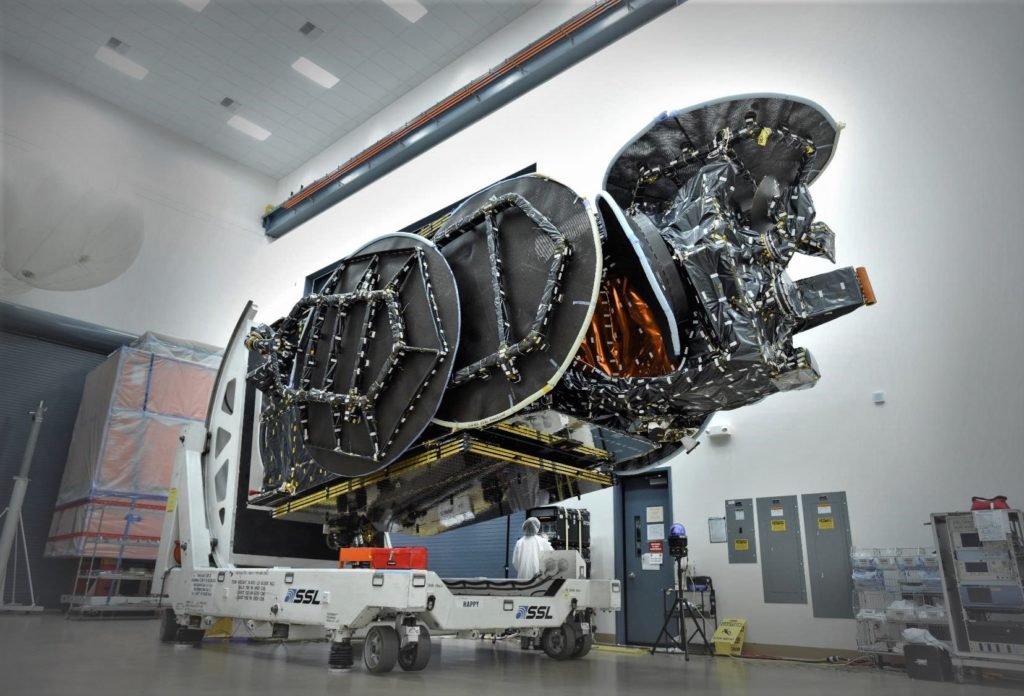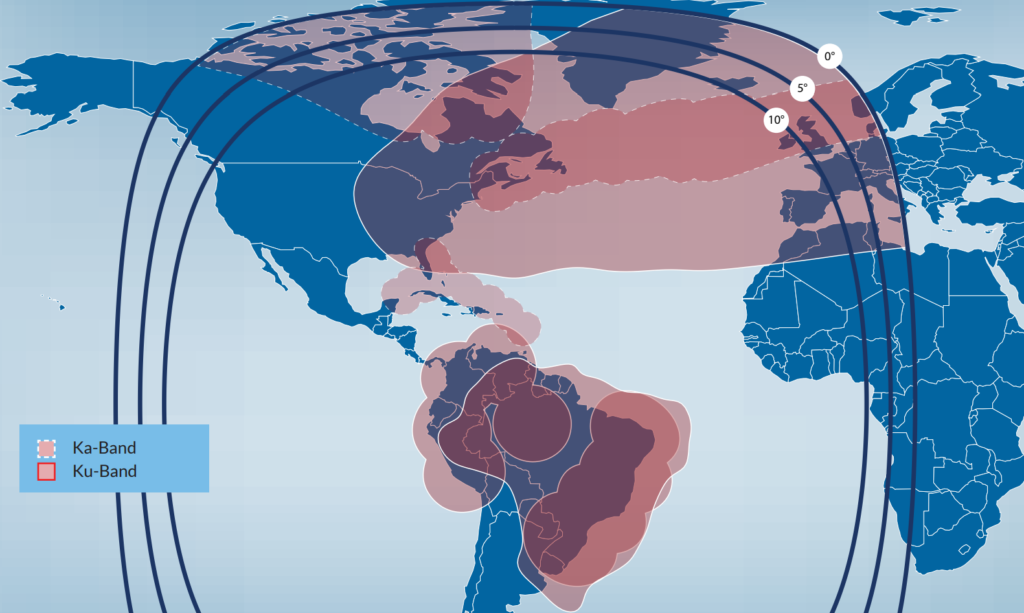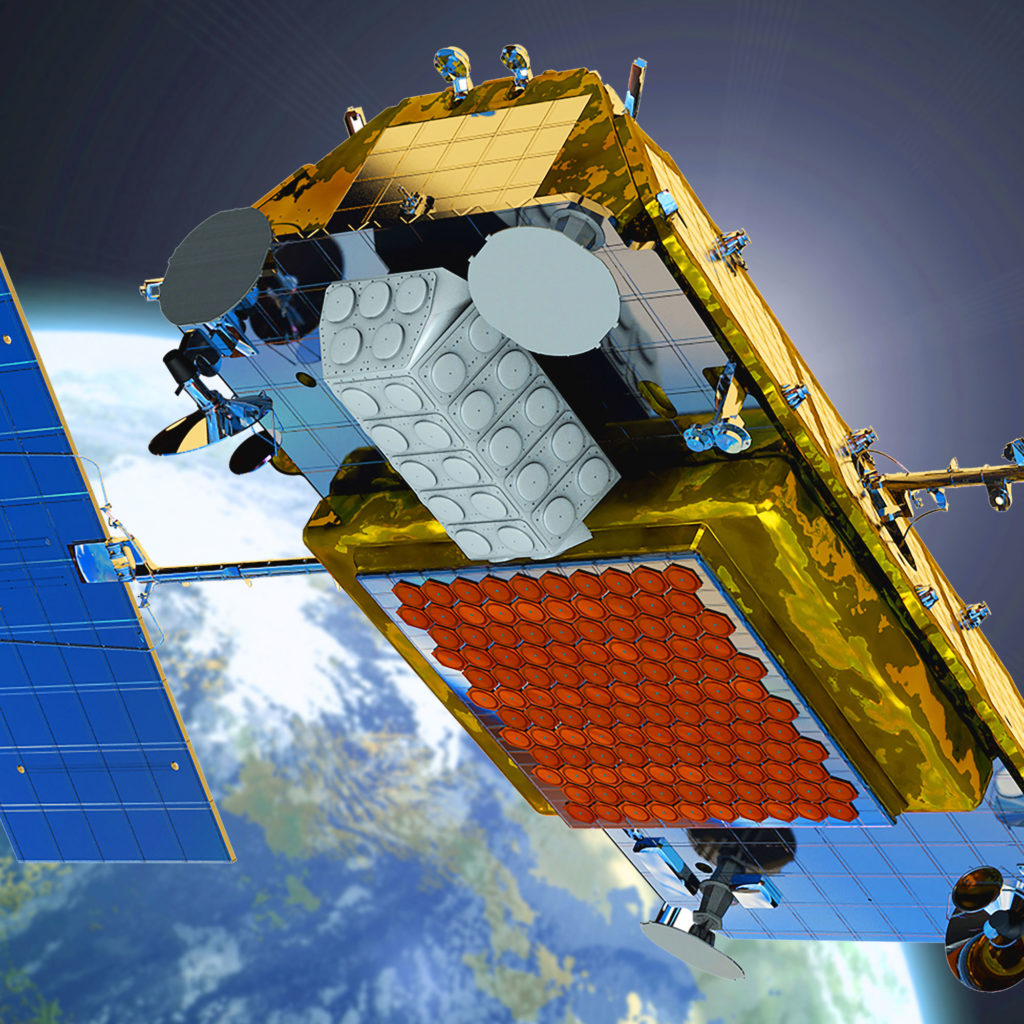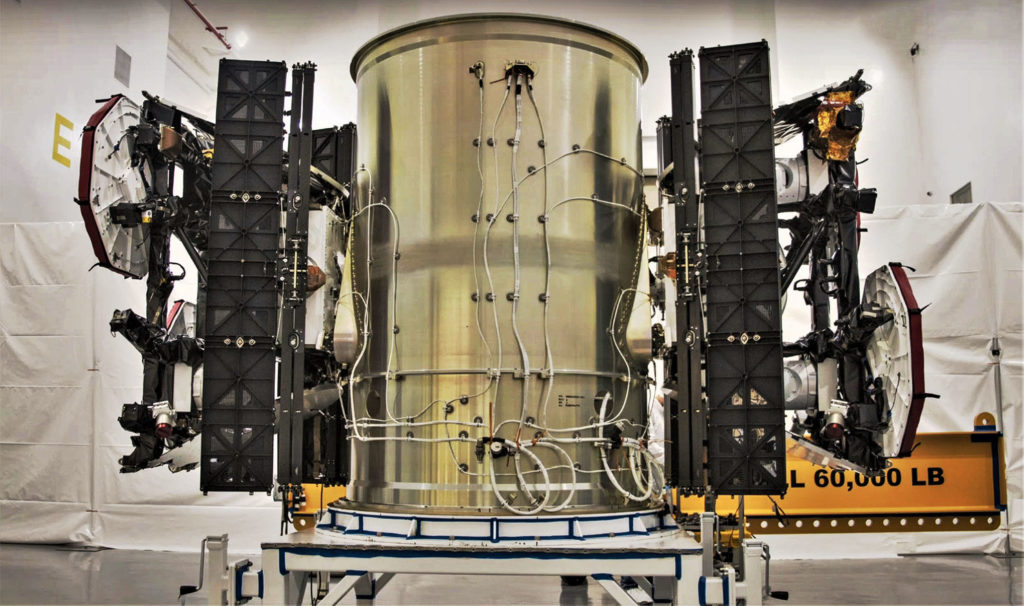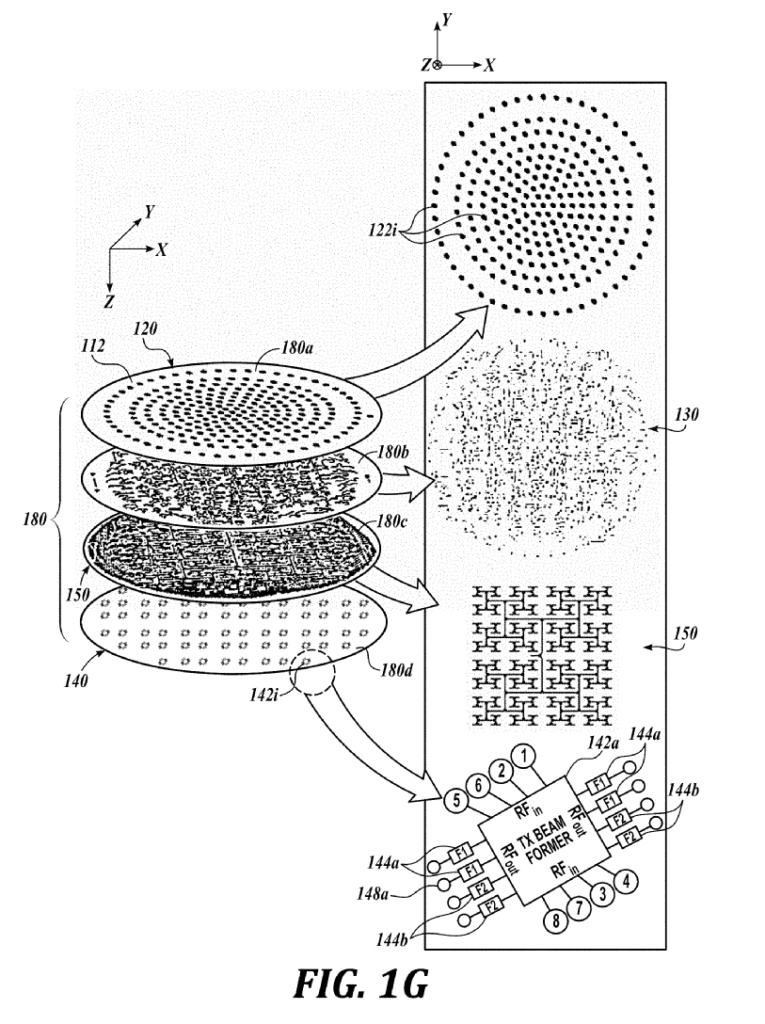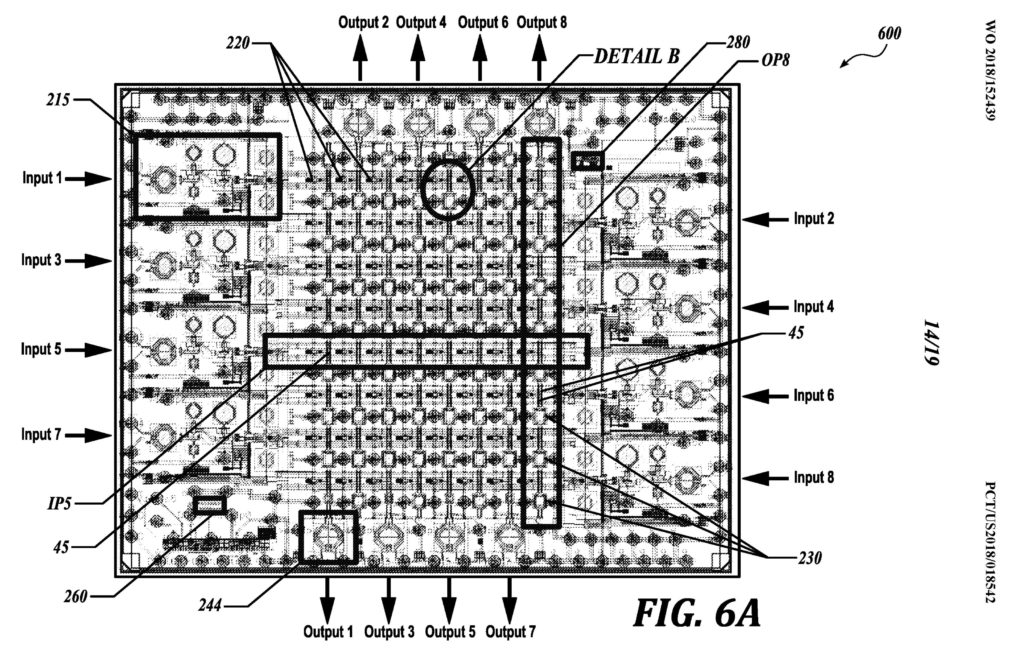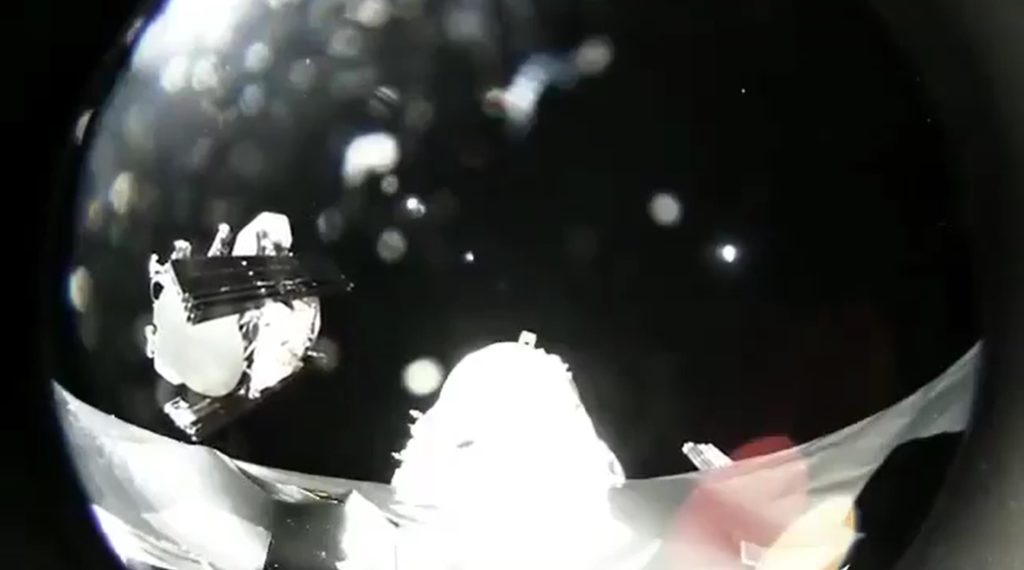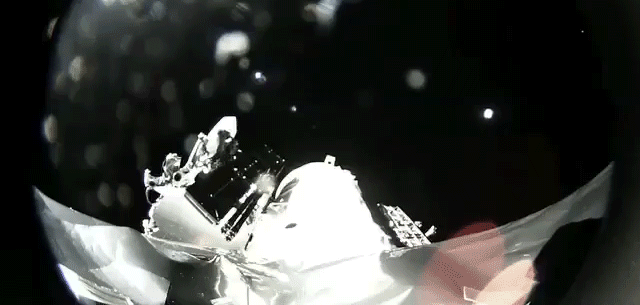

News
SpaceX board member says Starlink prototype satellites “are working wonderfully”
Speaking in a Satellite Innovation 2018 keynote, long-time SpaceX investor and board member Steve Jurvetson made a quiet but significant comment about the company’s Starlink satellite constellation efforts, stating that the first two prototype spacecraft – currently in orbit – “are working wonderfully.”
Standing in contrast to recent speculation that SpaceX’s Starlink project had experienced major failures with on-orbit hardware, Jurvetson may be a biased source but still has a major vested interest in SpaceX’s long-term success – supporting billions dumped into a satellite constellation with no real returns in sight would serve to seriously harm his significant investments in the company.
He would say that? Maybe, but @dfjsteve Jurvetson, early @SpaceX & @planet investor, told Satellite Innovation conference Oct 10, regarding SpaceX's two Starlink test sats launched in February: pic.twitter.com/WHzJlPUEPA
— Peter B. de Selding (@pbdes) October 12, 2018
Perhaps the most trustworthy source of SpaceX information outside of the company itself, Jurvetson expressed considerable confidence in SpaceX’s Starlink achievements thus far.
“I personally think SpaceX is in the lead [with Ku- and Ka-band phased arrays that could make (global LEO satellite broadband) possible] … Tintin 1 and 2 [are working wonderfully].” – Steve Jurvetson, Satellite Innovation 2018
Previously discussed on Teslarati, SpaceX’s growing experience with phased array antennas is undoubtedly a boon for the company’s proposed Starlink internet constellation, just one of several companies actively pursuing the increasingly competitive low Earth orbit (LEO) satellite broadband market. Fundamentally, phased array antennas will eventually take over nearly all multipurpose orbital communications thanks to the sheer simplicity and potential technical superiority of the technology.
Phased array antennas get their name from the fact that they have no moving parts – rather than moving a physical dish or angling dedicated ‘beams’, phased arrays actively use signal interference to very precisely shape, direct, and regulate line-of-sight communications beams. Currently quite immature, the draw of the technology is the sheer simplicity and reliability of antennas that require no moving parts, eliminating a major mode of failure and the inherent physical limitations of current antenna tech. Without something like phased arrays, LEO communications satellites would struggle to accurately and reliably track ground stations and gateways while traveling multiple kilometers per second.
- Traditional geostationary commsats like Telstar 19V feature dish-style antennas. The weird lumps and bumps on each dish are there by design, enabling the oddly specific coverage footprints seen to the right. (Telstar)
- Telstar 19V’s coverage map. Each coverage blob is there by design and is accomplished by physically shaping the antenna dish.
- LEO communications satellites like Iridium’s NEXT constellation feature totally flat panels of phased array antennas, capable of forming beams digitally. (Harris)
Large communications satellites in geostationary orbit do not face this problem. Thanks to their inherently fixed positions over ground targets (hence “geostationary“), designers and manufacturers have learned to quite literally mold each satellite’s on-orbit antennas to explicitly prioritize certain areas on the ground. This process tends to involve a prior determination of markets where demand for satellite communications is or will be highest, while also avoiding wasted coverage over areas with no need for it. However, once the antenna is launched, its beams are almost completely permanent. If markets change, the satellite simply cannot adapt.
Phased arrays, on the other hand, can almost entirely change where their many beams are directed, how much bandwidth is dedicated to certain locations, and all while accurately tracking moving targets with very few limitations. As a result, satellites with phased array antennas are sort of the communications jacks of all trades, capable of offering high-bandwidth connectivity to stationary user terminals, large ground stations, and moving vehicles simultaneously from with the same antenna array.
- SpaceX’s first two Starlink prototype satellites are pictured here before their inaugural launch, showing off a thoroughly utilitarian bus and several advanced components. (SpaceX)
- Patent diagrams like this show various subcomponents of a sandwiched phased array antenna, comprised of multiple printed circuit boards. (SpaceX)
- The technical term for this is “science rectangle.” In all seriousness, this is actually an extraordinary glimpse at custom silicon developed in-house at SpaceX, in this case a semiconductor die. (SpaceX)
- One of the first two prototype Starlink satellites separates from Falcon 9’s upper stage in February 2018. (SpaceX)
If SpaceX can perfect this, they will be the only company in the world to have done so on-orbit, while other satellite operators like Iridium have managed to build and launch low-bandwidth phased arrays but have yet to attempt to do so with the bands optimal for broadband internet or at a scale that might work for constellations of hundreds or even thousands of satellites. If Jurvetson is to be believed, SpaceX’s first foray into dedicated communications satellites and specialized hardware design and manufacturing has been a major success.
Even if the orbits of Tintin A and B do suggest that some difficulties were had with at least one satellite’s electric propulsion thrusters, it’s obvious that the experience and data derived from testing the vast majority of each satellite’s non-propulsion-related systems were invaluable and well worth the effort. Another group of prototypes will likely be launched according to Elon Musk, but that’s simply how SpaceX develops complex systems – build, launch, learn, and repeat.
For prompt updates, on-the-ground perspectives, and unique glimpses of SpaceX’s rocket recovery fleet check out our brand new LaunchPad and LandingZone newsletters!

Cybertruck
Tesla updates Cybertruck owners about key Powershare feature

Tesla is updating Cybertruck owners on its timeline of a massive feature that has yet to ship: Powershare with Powerwall.
Powershare is a bidirectional charging feature exclusive to Cybertruck, which allows the vehicle’s battery to act as a portable power source for homes, appliances, tools, other EVs, and more. It was announced in late 2023 as part of Tesla’s push into vehicle-to-everything energy sharing, and acting as a giant portable charger is the main advantage, as it can provide backup power during outages.
Cybertruck’s Powershare system supports both vehicle-to-load (V2L) and vehicle-to-home (V2H), making it flexible and well-rounded for a variety of applications.
However, even though the feature was promised with Cybertruck, it has yet to be shipped to vehicles. Tesla communicated with owners through email recently regarding Powershare with Powerwall, which essentially has the pickup act as an extended battery.
Powerwall discharge would be prioritized before tapping into the truck’s larger pack.
However, Tesla is still working on getting the feature out to owners, an email said:
“We’re writing to let you know that the Powershare with Powerwall feature is still in development and is now scheduled for release in mid-2026.
This new release date gives us additional time to design and test this feature, ensuring its ability to communicate and optimize energy sharing between your vehicle and many configurations and generations of Powerwall. We are also using this time to develop additional Powershare features that will help us continue to accelerate the world’s transition to sustainable energy.”
Owners have expressed some real disappointment in Tesla’s continuous delays in releasing the feature, as it was expected to be released by late 2024, but now has been pushed back several times to mid-2026, according to the email.
Foundation Series Cybertruck buyers paid extra, expecting the feature to be rolled out with their vehicle upon pickup.
Cybertruck’s Lead Engineer, Wes Morrill, even commented on the holdup:
As a Cybertruck owner who also has Powerwall, I empathize with the disappointed comments.
To their credit, the team has delivered powershare functionality to Cybertruck customers who otherwise have no backup with development of the powershare gateway. As well as those with solar…
— Wes (@wmorrill3) December 12, 2025
He said that “it turned out to be much harder than anticipated to make powershare work seamlessly with existing Powerwalls through existing wall connectors. Two grid-forming devices need to negotiate who will form and who will follow, depending on the state of charge of each, and they need to do this without a network and through multiple generations of hardware, and test and validate this process through rigorous certifications to ensure grid safety.”
It’s nice to see the transparency, but it is justified for some Cybertruck owners to feel like they’ve been bait-and-switched.
News
Tesla’s northernmost Supercharger in North America opens

Tesla has opened its northernmost Supercharger in Fairbanks, Alaska, with eight V4 stalls located in one of the most frigid cities in the U.S.
Located just 196 miles from the Arctic Circle, Fairbanks’s average temperature for the week was around -12 degrees Fahrenheit. However, there are plenty of Tesla owners in Alaska who have been waiting for more charging options out in public.
There are only 36 total Supercharger stalls in Alaska, despite being the largest state in the U.S.
Eight Superchargers were added to Fairbanks, which will eventually be a 48-stall station. Tesla announced its activation today:
North America’s northernmost Supercharger Fairbanks, AK (8 stalls) opened to public. https://t.co/M4l04DZ6B5 pic.twitter.com/zyL6bDuA93
— Tesla Charging (@TeslaCharging) December 12, 2025
The base price per kWh is $0.43 at the Fairbanks Supercharger. Thanks to its V4 capabilities, it can charge at speeds up to 325 kW.
Despite being the northernmost Supercharger in North America, it is not even in the Top 5 northernmost Superchargers globally, because Alaska is south of Norway. The northernmost Supercharger is in Honningsvåg, Norway. All of the Top 5 are in the Scandanavian country.
Tesla’s Supercharger expansion in 2025 has been impressive, and although it experienced some early-quarter slowdowns due to V3-to-V4 hardware transitions, it has been the company’s strongest year for deployments.
🚨🚨 Tesla Supercharging had a HUGE year, and they deserve to be recognized.
🍔 Opened Tesla Diner, a drive-in movie theater with awesome, Chef-curated cuisine
🔌 Gave access to Superchargers to several EV makers, including Hyundai, Genesis, Mercedes-Benz, Kia, Lucid, Toyota,… pic.twitter.com/yYT2QEbqoW
— TESLARATI (@Teslarati) December 10, 2025
Through the three quarters of 2025, the company has added 7,753 stations and 73,817 stalls across the world, a 16 percent increase in stations and an 18 percent increase in stalls compared to last year.
Tesla is on track to add over 12,000 stalls for the full year, achieving an average of one new stall every hour, an impressive statistic.
Recently, the company wrapped up construction at its Supercharger Oasis in Lost Hills, California, a 168-stall Supercharger that Tesla Solar Panels completely power. It is the largest Supercharger in the world.
News
Tesla shocks with latest Robotaxi testing move
Why Tesla has chosen to use a couple of Model S units must have a reason; the company is calculated in its engineering and data collection efforts, so this is definitely more than “we just felt like giving our drivers a change of scenery.”

Tesla Model S vehicles were spotted performing validation testing with LiDAR rigs in California today, a pretty big switch-up compared to what we are used to seeing on the roads.
Tesla utilizes the Model Y crossover for its Robotaxi fleet. It is adequately sized, the most popular vehicle in its lineup, and is suitable for a wide variety of applications. It provides enough luxury for a single rider, but enough room for several passengers, if needed.
However, the testing has seemingly expanded to one of Tesla’s premium flagship offerings, as the Model S was spotted with the validation equipment that is seen entirely with Model Y vehicles. We have written several articles on Robotaxi testing mules being spotted across the United States, but this is a first:
🚨 Tesla is using Model S vehicles fitted with LiDAR rigs to validate FSD and Robotaxi, differing from the Model Ys that it uses typically
Those Model Y vehicles have been on the East Coast for some time. These Model S cars were spotted in California https://t.co/CN9Bw5Wma8 pic.twitter.com/UE55hx5mdd
— TESLARATI (@Teslarati) December 11, 2025
Why Tesla has chosen to use a couple of Model S units must have a reason; the company is calculated in its engineering and data collection efforts, so this is definitely more than “we just felt like giving our drivers a change of scenery.”
It seems to hint that Tesla could add a premium, more luxury offering to its Robotaxi platform eventually. Think about it: Uber has Uber Black, Lyft has Lyft Black. These vehicles and services are associated with a more premium cost as they combine luxury models with more catered transportation options.
Tesla could be testing the waters here, and it could be thinking of adding the Model S to its fleet of ride-hailing vehicles.
Reluctant to remove the Model S from its production plans completely despite its low volume contributions to the overall mission of transitioning the world to sustainable energy, the flagship sedan has always meant something. CEO Elon Musk referred to it, along with its sibling Model X, as continuing on production lines due to “sentimental reasons.”
However, its purpose might have been expanded to justify keeping it around, and why not? It is a cozy, premium offering, and it would be great for those who want a little more luxury and are willing to pay a few extra dollars.
Of course, none of this is even close to confirmed. However, it is reasonable to speculate that the Model S could be a potential addition to the Robotaxi fleet. It’s capable of all the same things the Model Y is, but with more luxuriousness, and it could be the perfect addition to the futuristic fleet.
